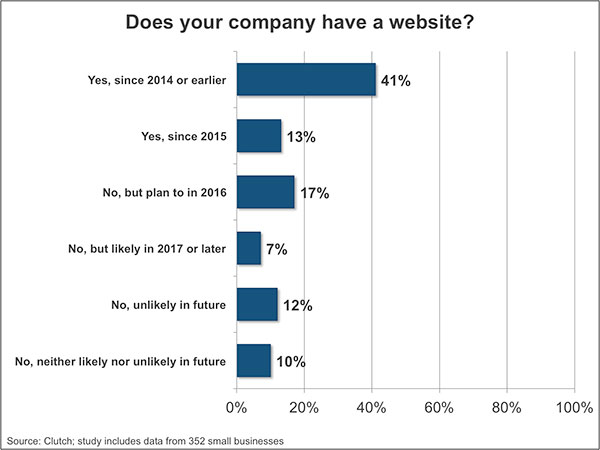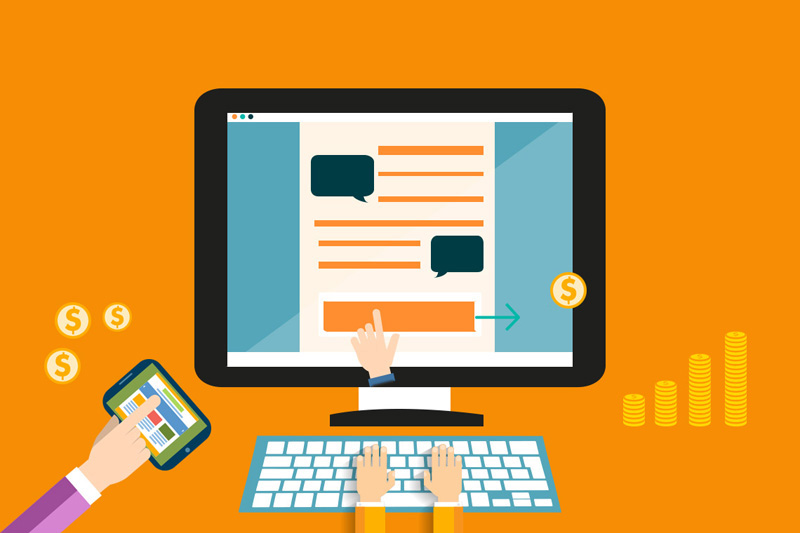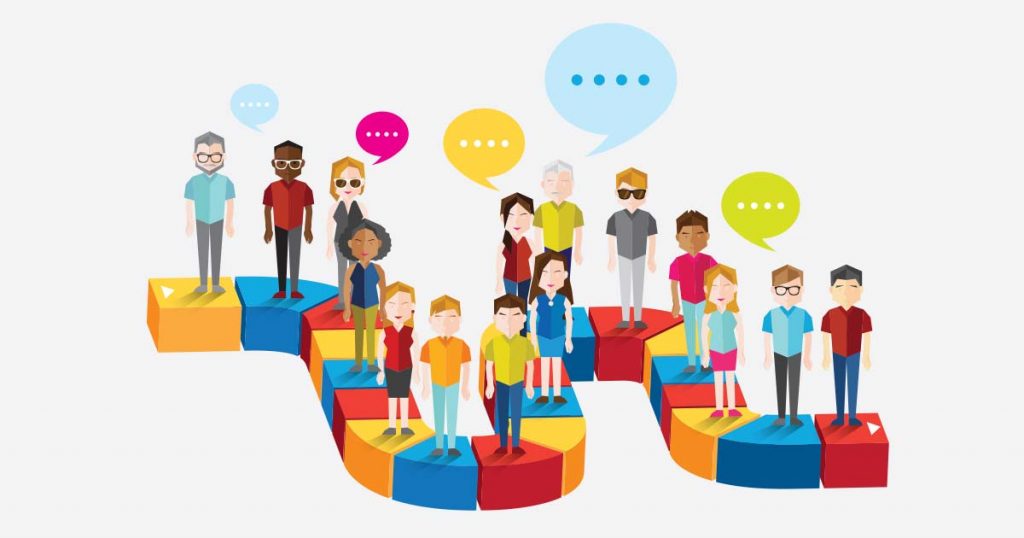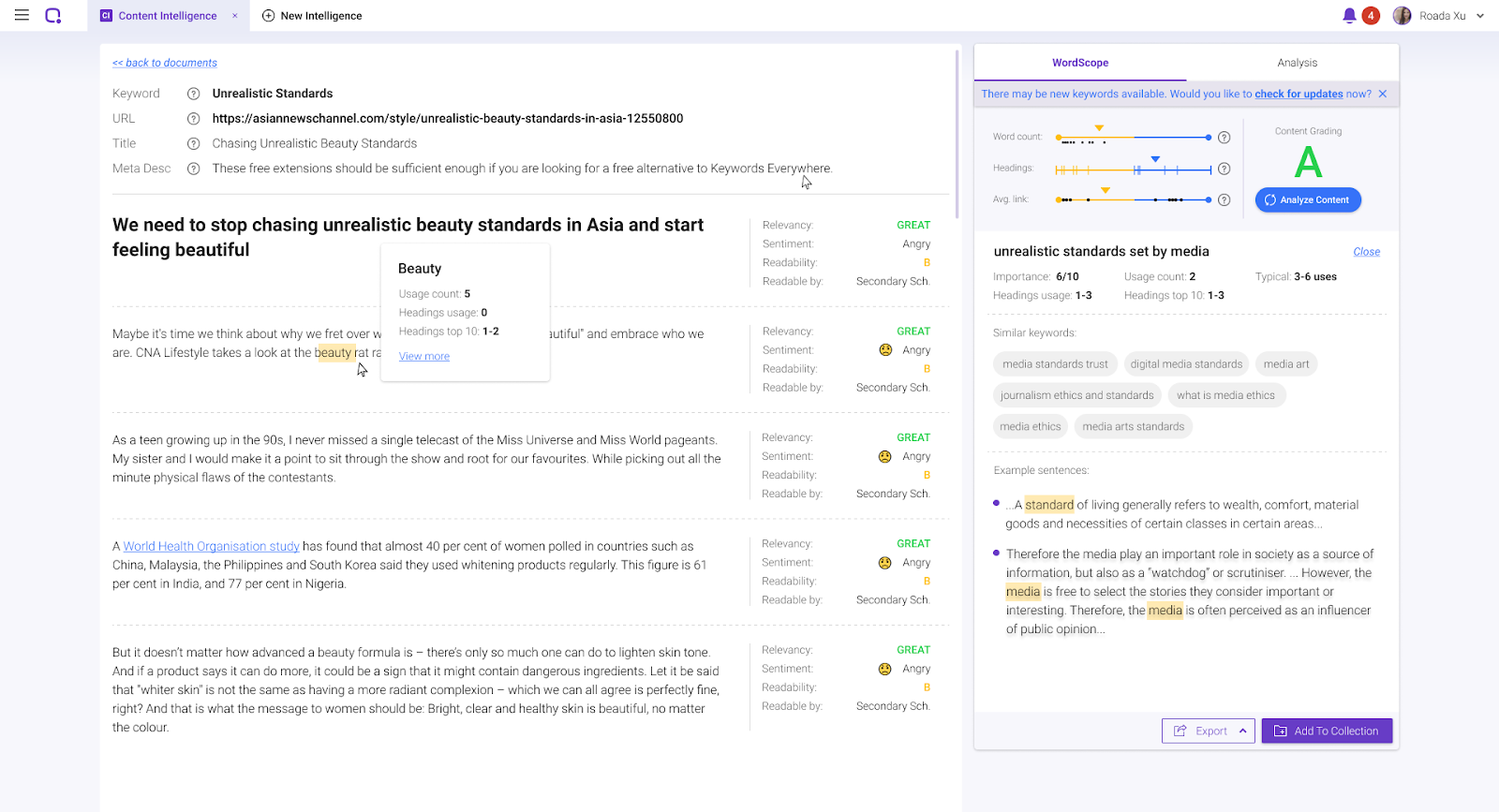Steph W. from SEOPressor


...help you check your website and tell you exactly how to rank higher?


80
score %
SEO Score

Found us from search engine?
We rank high, you can too.
SEOPressor helps you to optimize your on-page SEO for higher & improved search ranking.
By vivian on October 6, 2016

Here’s something that might surprise you: most businesses under utilize their websites.
Seriously.
Nearly half of small business owners don’t even have one. In the 2016, that’s laughable. Yelp recently did a study that found 85% of people use the internet to find local businesses.

Studies show that nearly half of all business owners doesn’t have websites for their business.
Given the internet is where most people make their initial inquiries, this means a business without a web presence may as well not exist to the vast majority of the population.
Of those small businesses that do have websites (less than half, remember), most are virtual business cards with a few perfunctory details and a phone number or email address.
This was good enough in 2001, fifteen years ago, but now, it basically amounts to throwing money away.
I can hear the objections already. “Creating a great website requires investment with no clear return!”, “Nobody knows what will be successful online, other avenues are more predictable!”
Well, I’m here to tell you that this is simply no longer the case.
It’s completely understandable that entrepreneurs and small business owners aren’t going to be experts in web development strategy and implementation.
All your passion and energy is going into your Big Idea. I get that. I respect that.
But with a little development, an outsourced skeleton crew, a little maintenance and promotion, a website can offer the biggest and best return on investment of any avenue.
A business website can be your main source of sales. A business website is capable of pulling in traffic from search engines, online ads and social media, in far greater volumes than any other single resource you have.
“But even if I do all that, there’s still no way to tell if it’s working!”
Well, I’m here to tell you otherwise. With multiple tools and metrics, I’m going to guide you through exactly how you can begin to measure website success in a quantifiable and measurable way.
What’s more, I’ll explain how doing so will help you unlock the route to investment, development, troubleshooting, and more.
By using measurable data to create and evolve strategy, you’ll be able to improve website performance and finally start seeing the results you’ve been looking for.
I’m going to start at the very beginning, establishing how your site can get sales, before hammering the holy trinity of metrics: visitors, reads, and engagement.

A good website should generate sales or at least contribute greatly to them.
It’s important I start from the beginning. If your website is simply a tick box on your list of modern business requirements, you need to open your eyes to the wasted potential.
Websites can generate sales through several very important methods. These create a step by step roadmap to how to convert visitors to purchasers.
Now you have your basic roadmap, know that the effectiveness of every step in this process is measurable. Even better, it’s all measurable using Google Analytics, a free tool that will become fundamental to your only success as you progress.
While I won’t delve into Google Analytics too much here, know that there’s a superb beginners guide from Moz that will teach you exactly how to use it, from set up to execution.
Instead of looking at the technicalities, we’ll look at what you want to be measuring, why, and what it can tell you.

Getting people to discover and visit your website is the first step in making a website successful
Making sure that people find and visit your website is paramount. Otherwise, it’s a tree falling in the forest with no one there to hear it.
This requires various approaches, including SEO, local optimization, content promotion, online advertising, mobile optimization and more. We’ve covered many of these topics on this very blog, but that’s not our focus today.
Today you want to be able to answer the question above, and do it in detail. Having a large number of visitors is a great litmus test. It’s a signaller that demonstrates how popular and influential a website is.
This kind of popular endorsement will make you look more legitimate, more established, and therefore more of an authority.
You can measure traffic to your website using Google Analytics. But what are you looking for?
Now you know where it comes from, what else can you find out about it?
New sessions will help you understand what percentage of your total visits are first time visits, and what percentage are returning visits. A high amount of new sessions means a greater number of potential customers.
If you have more returning visits than first time visits, that means the same group of people are coming back to your website. That’s a good thing – it means your engagement strategies are working.
That said, you will always need new people to join and expand that group of loyal users, so you want to make sure you strike the right balance between new sessions and returning customers.
Knowing the split will allow you to determine where your focus should be – low first time visits and you need to strike out into new markets and communities, really high first time visits and you need to focus on retaining the audience you’ve already built.
New users will tell you the actual amount of first time visitors that have come to your site. To be able to make use of this information, you also need to look at your conversions.
After all, if you’re getting hundreds of new visitors but only a couple of strong leads from them, then traffic isn’t your problem – engagement is. Conversely, if you have ten people visit the site but all become strong leads, then conversion isn’t your problem, getting exposure is.

Next, you’d want to know out of all visitors, how many actually sticks and read your contents.
Unfortunately, the number of sessions is only the barest data you can get. In order to know if people are actually reading what they find there, we have to go deeper.
In all essense, if you want your readers to stay and read your content you’ll first need to target the right keywords that lead them to your door and then have an SEO optimized content to get them reading entirely.
Firstly, to get your content ranked for the right keywords based on the right search intent, BiQ’s Keyword Intelligence is your best bet in doing so.

There are 4 main tabs for you to get the most out of keyword research process.
If you’re looking for interesting ideas for your next blog post, head to content ideas for a range of keywords you can target!
If you’re eager to know what are some of the questions revolving the content you’re about to create, popular quetions tab is able to help you out!
Or if you’d like to know what are the current trends that people are looking for on the SERP live, trending searches will give you an immediate and accurate answer!
All in all, with the availability of Keyword Intelligence, you can use them for content creation, search engine optimization, pay-per-click advertising or other marketing activities.
Next, comes BiQ’s Content Intelligence. This module is extremely important if you wish to optimized your content so that it is well-liked by both your readers and search engines.

This module shows you how you can take the guesswork out of marketing by making recommendations for a content strategy based on the integration and advanced analysis of multiple intelligence sources.

Intelligent sources like AI-guided optimization, advanced line-by-line analysis, sentiment analysis, readability rater, and content performance tracking are all present to better understand your customer’s intent and behaviors.
Sign up for free account here if you’re ready to bring your site to greater heights!
Remember, the important thing with getting people to read your content is to first get them through the door. To track if they’re actually reading the content and engaging will depend on several metrics such as:
This will help you assess how much time, on average, a user spends on a given page. The ideal time spent on a page varies on the length of the page, the difficulty of the page, and the level of interest it generates. I covered mastering the balance of these forces in a previous article, if you want to know how to make sure you’re performing well on this level.
PPS helps you understand more about what users are doing from the moment they come to the site to the moment they leave.
Generally the more pages people visited the better, but it can also be an indicator of dissatisfaction – if people have to visit six pages to find what they’re looking for, that points to a poor user experience.
Checking what pages they actually were will give you a better idea as to which one it’s pointing to.
The bounce rate enables you to track how many people read only one page before leaving your site.
Again, this can be good or bad, and there’s a way to tell.
Quick Bounce – A quick bounce means people have looked, decided it’s not for them, and left because they didn’t find what they were looking for. Disappointing.
Long Bounce – A users has spent a lot of time on a single page and is so satisfied by what they discovered they require no further investigation. Huzzah!
An entrance shows you what page people started their session on. You might think this would be the home page, when in fact that’s rarely the case, especially with referral traffic. This gives you a fast and easy understanding of what content is bringing in the traffic for the first time.
This allows you track what pages are the last one’s people have open before closing the tab, the window, or navigating away. If there’s a page with a disproportionate number of exits, you’ve probably identified a problem that could use your attention.
Next question to ask is, does your readers simply reads or do they take some action as well?
So now you know if people are coming to your site and when they do, if they’re spending time on it reading.
Great. But often, so much emphasis is put on these stages by SEO bloggers that small businesses may think this is the endgame. We’re only half way there!
The next, and more important thing we need to track is transforming people from silent observers to active participants and contributors to the site. Fortunately, there are several ways to gauge this important aspect of site performance.
We touched on this earlier, and now it’s time to get into the details. One of the best ways to encourage visitors to keep coming back is to encourage them to opt in to an email subscription.
This allows you to update people with your latest content directly from within their inbox. This means people don’t have to remember to check your site regularly – they’re notified when it’s worth them coming back.
Your ability to convert visitors into subscribers is an indication of how successful your site is being on your behalf.
To calculate the number of conversions, simply look at your number of subscribers relative to your number of new users. If it’s a tiny proportion then you have more work to do.
Despite common knowledge suggesting one should “never read the comments section”, people can’t help themselves. Having an active comments section is a great way to measure engagement, especially on thorny topics that offer no easy answers.
Tracking comment participation is a useful litmus as to how engaged your users are. Indeed, many online authors look to promote comments as much as possible, even featuring them in updates to articles, in order to encourage more discussion.
Social shares offer a similar litmus but on a different dimension. While comments tell you how many people who have read the article were moved by it, social shares tell you how willing those same people are to recommend the content. We’ve talked about the psychology of social sharing before, and one of the biggest reasons people share content is because it reinforces their image and confirms or expands their pre-existing beliefs.
As such, social shares allow you to see how well you are tapping into and mirroring your audience personas. It also allows you to understand what kind of content is viral, and what your strongest pages are for driving additional referral traffic.
Downloads are an incredibly useful tool, and one you should consider if you haven’t offered them already. Free downloads including e-books and guides, educational resources, free trials or ‘freemium’ packages are a Trojan horse (in the Greek rather than Computing sense!) that can help you massively enhance your relationship with a potential customer.
However, in order to reach the action potential for a download, your visitors must have a strong interest and a clear demand for your products and services. As such, the number of downloads you get tells you how well your website is engaging and converting people from visitors to participants.

And finally, you should ask yourself, does my website compels visitors to actually make a purchase?
Some people say “It’s not the destination, it’s the journey that’s important!”
Well, those people don’t run successful websites.
We’ve talked about how to track visitors, engagement and conversion. These are all very important steps on the journey, but now we arrive at the destination. Tracking how well you can get people to buy from your website.
At all times, you want to be aiming to maximize the number of people who buy something after they come to your site. That can be a little tricky, as well as being pretty disheartening if you do it the wrong way. Here are the two best ways to measure sales conversion.
This allows you to set your measurements as far as your audiences are concerned, but what about your sales? Well, there are two sides to that coin, too. One is considerably more difficult than the other, but all sales are sales, and you need to track them.
Online sales are the easy ones to track in relation to your website performance, because these are the transactions made through the website itself. Tracking these should be easy, as the numbers are recorded in every major shopping cart system. From there you can simply compare the sales data to your leads or visitors.
Many businesses will offer online sales as well as offline sales in bricks and mortar establishments. That said, many people may have discovered the bricks and mortar business by searching online and may have been convinced to visit the store by the website. As such, it can be tricky to track what sales have been influenced by the website versus other promotional efforts.
That said, there are ways and means with just a little work to determine what influence the website had and on whom.
Throughout this article I’ve talked about how each measurement might inspire you to change something on your site.
If you use this article as a checklist and go through these processes one by one after installing Google Analytics, I guarantee you’ll have identified areas of opportunity that can improve your website’s performance.
That’s because data is only as good as its interpretation. Once you know how to ‘read the matrix’, all of this becomes far less intimidating and starts to help, rather than hinder, your progress with your website.
Whether your numbers are large or small right now, they can always be larger. I’ve yet to hear of a website too big.
Unless you’ve created the next Facebook, you aren’t going to run that risk. So use these measurements to start to understand where you are right now, and that will automatically let you know where you’re going next.
It could be that you simply need to increase the amount of time people spend on the pages of your website. It could be that you need to make them start actively engaging.
It could be that you need to convert that engagement into sales. Whatever the problem area, you’ll discover both what it is and how to fix it.
If this is your first foray into monetizing your website, then this data will help you understand exactly where you’re starting from.
What it can’t do is tell you what an extraordinary opportunity you have in front of you. The internet is the world’s largest marketplace, with the highest number of users of any medium of communication.
With multiple touchpoints across search engines, email, social media and more, and multimedia enabling you to communicate in more varied ways than ever, your website now has the potential to be the biggest force for sales in your strategy.
If you’ve used these instruments in novel ways, if you have any questions, or if you think we’ve missed something essential to people’s use and analysis of website data, then let us know in the comments below.
Updated: 1 January 2026


Save thousands of dollars (it’s 100x cheaper)

Zero risk of Google penalty (it’s Google-approved)

Boost your rankings (proven by case studies)
Rank High With This Link Strategy
Precise, Simplified, Fast Internal Linking.
